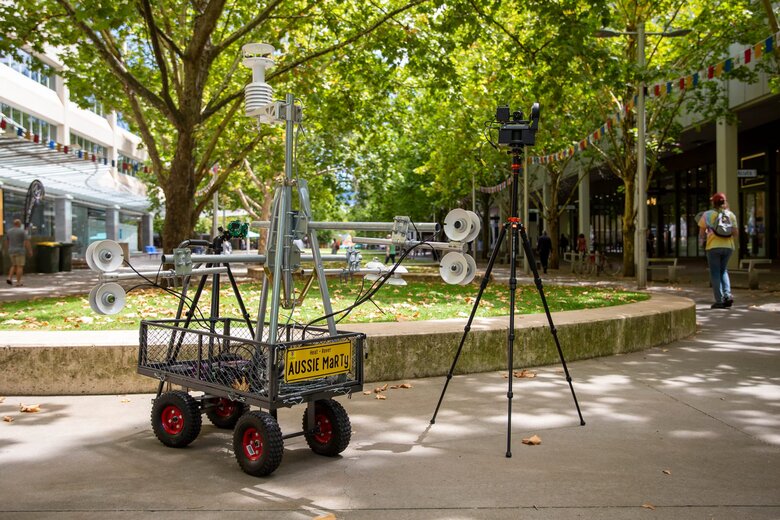
The ACT’s City Renewal Authority has recruited a robot called MaRTy that simulates the way humans experience heat, solar radiation and humidity to measure outdoor conditions in locations across the Canberra City Centre.

The “thermal comfort study” aims to help the renewal authority, which is charged with revitalising the city centre, plan more cool and pleasant outdoor spaces.
The MaRTy (derived from ‘mean radiant temperature’ or MRT) was developed by researchers from Arizona State University (ASU) and this is the first time it’s being used in Australia.
According to ASU, MaRTy is a “mobile biometeorological instrument platform” capable of measuring air temperature, humidity, wind speed and direction, GPS coordinates and MRT using a 6-directional model.
Previous urban climate studies using MaRTy have been widely published in scientific journals.
Data-driven urban planning
The ACT study is being led by environmental consultants Mosaic Insights in collaboration with the Climate Resilient Cities Lab at UNSW.
Jan Orton, General Manager at Mosaic, says the study will deliver data-driven urban and landscape upgrades.
“It is critical that we use data and evidence to inform how our cities and landscapes are designed so they can be as cool as possible and can function into the future in a climate changed world,” she said.
It is critical that we use data and evidence to inform how our cities and landscapes are designed so they can be as cool as possible and can function into the future in a climate changed world.
Jan Orton, Mosaic Insights
It will become increasingly important to leverage design strategies to minimise heat island effects as increasing urbanisation combines with rising temperatures to create hotter cities, according to Dr Negin Nazarian from UNSW.
“In urban environments, radiation and heat reaches us from direct sunlight but reflected sunlight also reaches us from surfaces.
“Many built materials such as bricks, asphalt and concrete amplify the strength of reflected heat from the sun while features like shade, greenery and water bodies can reduce heat.”
Executive Branch Manager of Design and Place Strategy for the City Renewal Authority, Lucy Wilson says it’s important to ensure that new developments provide comfortable outdoor spaces.
She say the study will help map temperatures and heat islands around the city, and is being deliberately conducted in February, when the city is most likely to be affected by hot conditions.
“This study will help us understand the current temperatures and heat conditions in locations across the City Centre.
“This knowledge will help us reduce the heat impact through climate-wise design. We will also be able to measure improvements in outdoor thermal comfort over time.”
The City Renewal Authority plans to repeat the analysis in the coming years.
Comment below to have your say on this story.
If you have a news story or tip-off, get in touch at editorial@governmentnews.com.au.
Sign up to the Government News newsletter